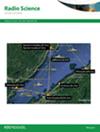Granite exposure mapping through Sentinel-2 visible and short wave infrared bands
IF 1.6
4区 地球科学
Q3 ASTRONOMY & ASTROPHYSICS
引用次数: 0
Abstract
Nonmetallic minerals like granite and limestone have calcite and biotitic ingredients as their major part which exhibit wonderful absorption features in the visible and short wave range of the electromagnetic spectrum. This research puts emphasis on delineating granite and limestone deposits of the Mardan district through the latest multispectral Landsat-9 and Sentinel-2 sensors of which the latter provided 94% mapping accuracy in delineating granites (biotitic bearing minerals) and limestone (calcite-bearing minerals). The Image processing techniques of minimum noise fraction, which is double cascaded principal components analysis and pixel purity index algorithms proved helpful to bring significant improvements in classification results and in the reduction of noise and data size. The outcomes of the research study show that supervised machine learning algorithms are impactful to map such minerals provided that the data must be well organized and limited in size. The results achieved were verified through validation steps like, (a) Independent reference data of high-resolution Google Earth maps and (b) Ground survey reports. Arc GIS 10.2 and Envi 5.3 software suite were used to create (a) ground truth points at random for accuracy assessment (b) portraying study area maps (c) Image Processing and Preprocessing tools and (d) implementation of machine learning algorithms. Access to the data and software suite is being provided for open research work.通过哨兵-2 可见光和短波红外波段绘制花岗岩暴露图
花岗岩和石灰石等非金属矿物的主要成分是方解石和生物石,它们在电磁波谱的可见光和短波范围内表现出奇妙的吸收特征。这项研究的重点是通过最新的多光谱 Landsat-9 和 Sentinel-2 传感器对马尔丹地区的花岗岩和石灰石矿床进行划分,其中后者在花岗岩(含生物岩矿物)和石灰石(含方解石矿物)的划分方面提供了 94% 的测绘精度。事实证明,最小噪声分数图像处理技术(即双级联主成分分析和像素纯度指数算法)有助于显著改善分类结果,减少噪声和数据量。研究结果表明,有监督的机器学习算法对绘制此类矿物地图很有帮助,但前提是数据必须组织良好且规模有限。所取得的成果通过以下验证步骤进行了验证:(a)高分辨率谷歌地球地图的独立参考数据;(b)地面勘测报告。Arc GIS 10.2 和 Envi 5.3 套装软件用于创建:(a)用于准确性评估的随机地面实况点;(b)研究区域地图;(c)图像处理和预处理工具;以及(d)机器学习算法的实施。为开放研究工作提供了数据和软件套件。
本文章由计算机程序翻译,如有差异,请以英文原文为准。
求助全文
约1分钟内获得全文
求助全文
来源期刊

Radio Science
工程技术-地球化学与地球物理
CiteScore
3.30
自引率
12.50%
发文量
112
审稿时长
1 months
期刊介绍:
Radio Science (RDS) publishes original scientific contributions on radio-frequency electromagnetic-propagation and its applications. Contributions covering measurement, modelling, prediction and forecasting techniques pertinent to fields and waves - including antennas, signals and systems, the terrestrial and space environment and radio propagation problems in radio astronomy - are welcome. Contributions may address propagation through, interaction with, and remote sensing of structures, geophysical media, plasmas, and materials, as well as the application of radio frequency electromagnetic techniques to remote sensing of the Earth and other bodies in the solar system.
 求助内容:
求助内容: 应助结果提醒方式:
应助结果提醒方式:


